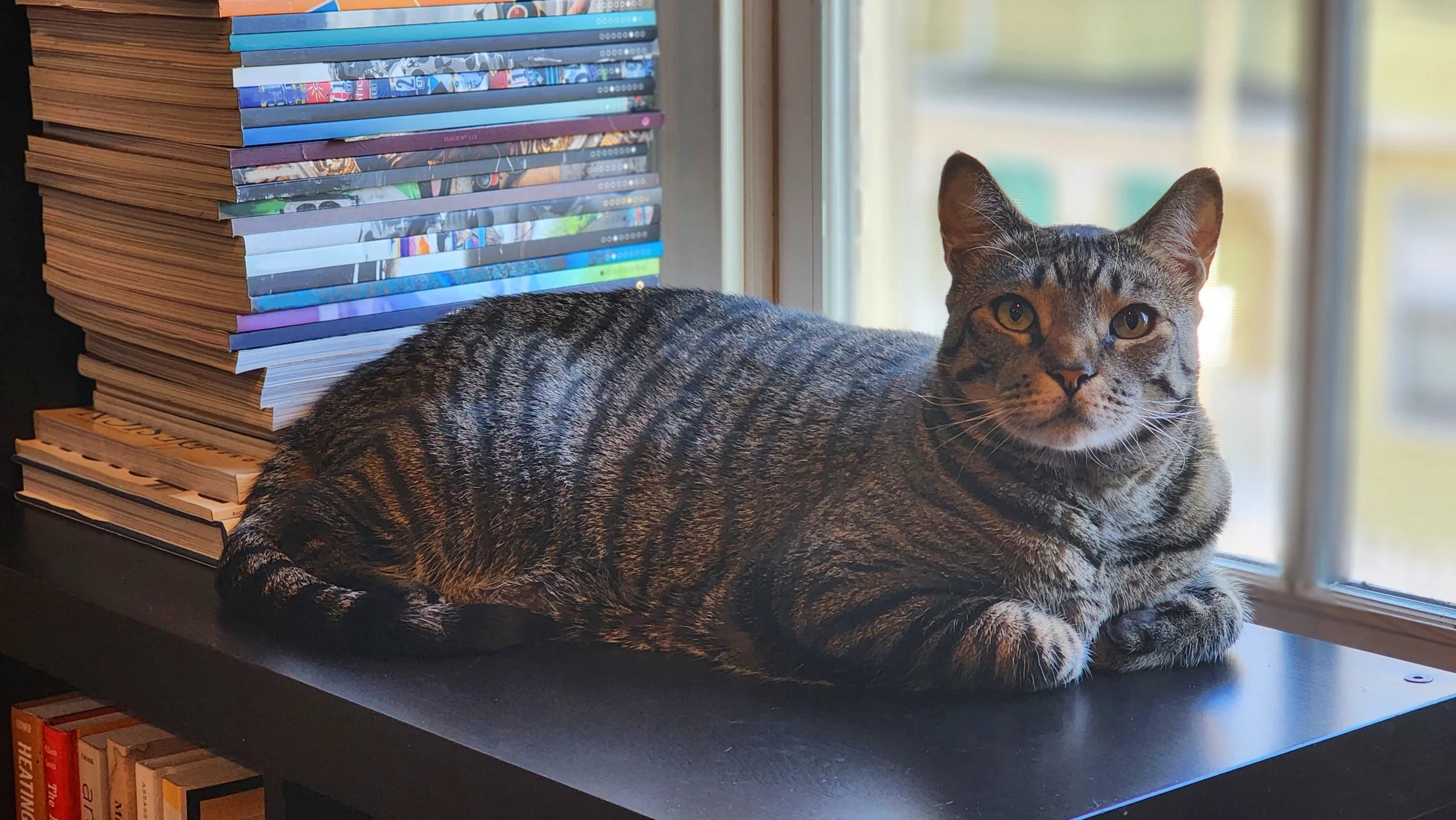Fear Free Pet Sitting for Your Cat
/At Purrmore, I strive to improve. Constant learning and skill improvement is one way to achieve this goal and improve the quality of care I give to your cat. “Peace of Mind for You and Your Cat” is not just a tagline; it’s my philosophy. I am proud and excited to share that as of fall 2021, I have been certified as a Fear Free Certified Professional (Pet Sitter).
The Fear Free movement aims to alleviate Fear, Anxiety, and Stress (FAS) in pets by educating veterinary professionals, pet care professionals, and pet owners and giving them tools to look after a pet’s physical and emotional wellbeing. A lot of helpful information for pet parents is available at Fear Free Happy Homes. I highly recommend checking it out and signing up for their newsletter, which will deliver beneficial information, articles, and videos.
Implementing Fear Free at Purrmore includes learning more about your cat’s likes and dislikes, favorite treats, and special considerations so that I can take all that information into account when caring for your cat. I recently added new questions to your cat’s profile in the client portal that will help me get to know your cat better.
Fear Free practices are fundamental when a cat needs medical care or medication. To enable Fear Free medication, I am implementing a procedure that includes providing information and suggestions and adapting my behavior. There are four pillars to the policy: Palatable Medication, Cooperative Care Training, Considerate Approach, and Veterinary Assistance.
Lana learned to high five as part of her clicker training
Palatable Medication - Wouldn’t it be easier if our cat would just take the medication as if it was just another bite of food? This wish can sometimes become a reality, with the caveat that it doesn’t always work for all cats and all types of medications. Some medications can be compounded into tasty treats or a tasty liquid. Some can be crushed into powder and hidden in delicious soft food like baby food. If it’s yummy, your cat may not mind eating their medication.
Recommendation: Discuss the medication with your veterinarian. Can it be compounded or crushed? If it can, we can figure out a feeding routine that will allow your cat to enjoy their medicine. It is important to note that cats are not fools, so it is not recommended to put their medication in their regular food because it may cause an aversion to their food.
Cooperative Care Training - Cooperative Care refers to training your cat to cooperate with the process of medication administration. This form of training can even start when the cat is young and healthy and requires no medication, and it will pay its dividends if the cat ever becomes unwell and needs medication. Cooperative Care Training will teach your cat to tolerate and even enjoy the touch and process of taking medicine. You can use similar methods to teach other skills, such as peaceful veterinary visits and nail trimming.
Cooperative Care Training also involves teaching the formula of Touch = Treat, which helps the cat tolerate being touched, even if they are not usually cuddly. It also includes the process of acclimating your cat to tools that are used during their care, like the nail trimmers or the vet’s statoscope. For Purrmore, the training process also includes meeting with your cat ahead of scheduled visits so that they can get to know their cat sitter.
Recommendation: Start training early, and reap the benefits later. Cooperative Care Training is essential for cats that need ongoing and long-term care. The following videos explain the training methods you can start working on right now:
Accepting oral and topical medication (a longer, more detailed video)
Considerate Approach - At the time of medication, a Considerate Approach means listening to your cat. Though your cat is a fantastic communicator, their message may be subtle. It is essential to pay attention to their body language during any procedure and adapt the process accordingly. Adapting the process may mean medication will take longer but be less stressful.
Recommendation: As you plan your travel, we will need to coordinate the approach for medicating your cat. This may mean prioritizing which treatments are an absolute must and which can be skipped or postponed if they cause the cat too much fear, anxiety, or stress. I will note which treats your cats will appreciate and rate them on a “Treat Ladder” so that I know which treats are more valuable for your cat. In addition to paying attention to body language and adjusting the way I handle your cat, I also may spray calming pheromones, play soothing music, or give your cat tastier treats based on their “Treat Ladder.” For example, we may provide your cat with a lickable treat puzzle to distract them.
Veterinary Assistance - If your cat tends to be anxious or fearful around strangers or during the medication process, planning for your trip will need to involve the cat’s entire care team, including their veterinarian. Your veterinarian may prescribe calming medications that your cat can take while you are away to help them feel more comfortable. If medication is required, but your cat exhibits signs of extreme stress, my best option will be to communicate with you and involve your veterinarian. I will not administer medication if I feel that my safety, or your cat’s safety, may be compromised.
Recommendation: Plan ahead by discussing your travel plans with your veterinarian. They may recommend calming medications. They should also have your cat sitter’s name on file if I need to bring them to the clinic and have them administer essential medicines.
Implementing Fear Free practices is an ongoing process. At Purrmore, we aim to constantly learn and improve to ensure your cat is happy and provide peace of mind to you and your cat while you are away.










